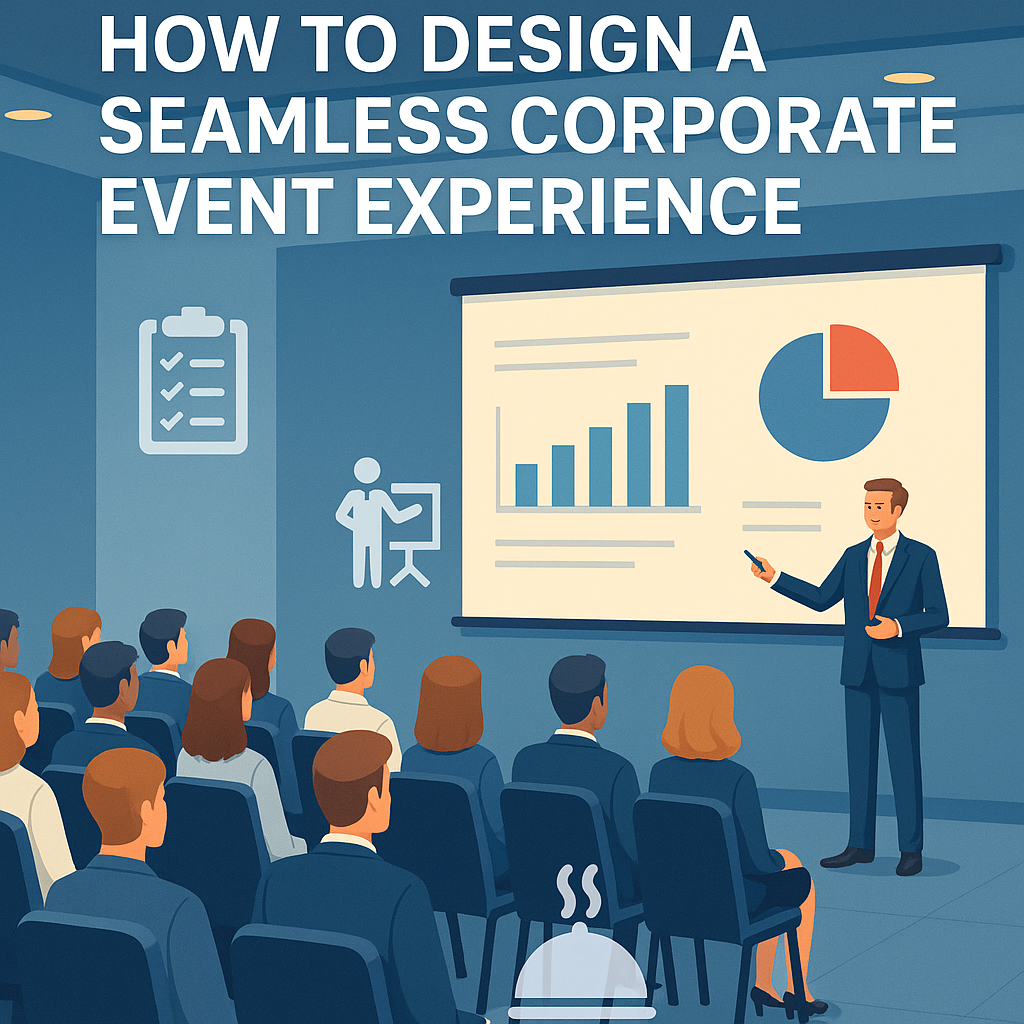
Corporate events are more than just formal gatherings they’re brand-building moments, networking platforms, and business catalysts. Whether you’re launching a product, hosting an executive summit, or celebrating milestones, designing a seamless corporate event experience is key to leaving a lasting impression.
In today’s fast-paced business world especially in hubs like Dubai, New York, and London event expectations have evolved. Guests demand elegance, engagement, and flawless execution. So, how do you craft an event that’s memorable and smooth?
Let’s break down the essential components.
1. Start with Strategic Planning
Every successful event begins with a clear goal. Before picking venues or speakers, ask:
- What is the core objective of this event?
- Who is the target audience?
- What kind of experience should attendees walk away with?
Create an event blueprint that includes your KPIs, budget estimates, timeline, and roles. Aligning your event goals with business outcomes will drive smarter decisions throughout the planning process.
2. Choose the Right Venue
The venue sets the tone. Choose a space that reflects your brand’s persona whether it’s luxury, innovation, or sustainability.
Consider these factors:
- Accessibility and location
- Parking and valet options
- AV & tech support
- Capacity and layout flexibility
- Nearby accommodation for out-of-town guests
For premium experiences in cities like Dubai, rooftop venues, private beach resorts, or smart convention centers offer the sophistication and infrastructure corporate guests expect.
3. Leverage Technology for Streamlined Logistics
Technology can make or break the guest experience. Use:
- Digital invitations & RSVP systems for clean attendee management
- Event apps for real-time updates and networking
- RFID badges or QR codes for fast, contactless check-ins
- Live streaming options for hybrid or global participation
These tools don’t just enhance convenience they reflect a forward-thinking brand.
4. Prioritize Hospitality and Personalization
Guests remember how they were treated. Ensure:
- Smooth registration and welcome processes
- Friendly, well-trained staff
- Personalized welcome kits, name tags, or table placements
- Dietary accommodations and lounge options
Consider offering white-glove concierge services for VIPs or executives, especially for C-suite focused events.
5. Design with Brand Storytelling in Mind
Every touchpoint is a chance to tell your brand story:
- Branded signage and installations
- Interactive product zones or demos
- Brand-themed décor and ambient lighting
- Visual storytelling via LED walls or projection mapping
Make sure your brand values and personality are subtly yet powerfully woven into the experience.
6. Engage All Senses
True immersion happens when you design for multi-sensory impact:
- Sound: Choose music or ambient sounds that match the mood
- Sight: Thoughtful stage design, lighting, and visuals
- Smell: Scent branding or curated aroma environments
- Taste: Premium catering with thematic or localized menus
- Touch: Interactive installations or tactile experiences
7. Measure Post-Event Impact
After the event, analyze:
- Attendee feedback (via surveys or digital apps)
- Engagement metrics (app usage, social media shares, etc.)
- Lead generation and conversion data
- Media mentions or PR exposure
Use this data to optimize future events and show ROI to stakeholders.
Facts
Designing a seamless corporate event is an art and science. It’s about balancing precision planning with emotional engagement. In a competitive landscape, a well-crafted event can reinforce your brand, deepen relationships, and set you apart from the rest.